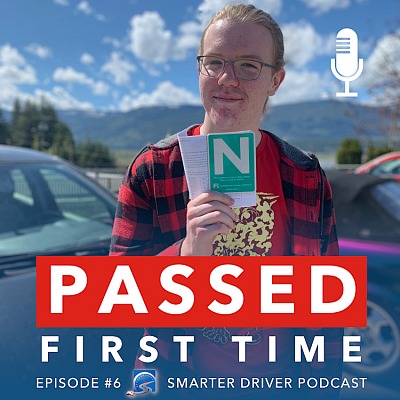Tips & Tricks to cope with post-pandemic driving anxiety.
Tools to Cope With Post Pandemic Driving Anxiety
Closed Caption
Cope With Post-Pandemic Driving Anxiety
A number of smart drivers now are returning to driving after the pandemic and some of them are finding that they have fear and anxiety around driving.
And this is perfectly normal It's not something that is wrong with you.
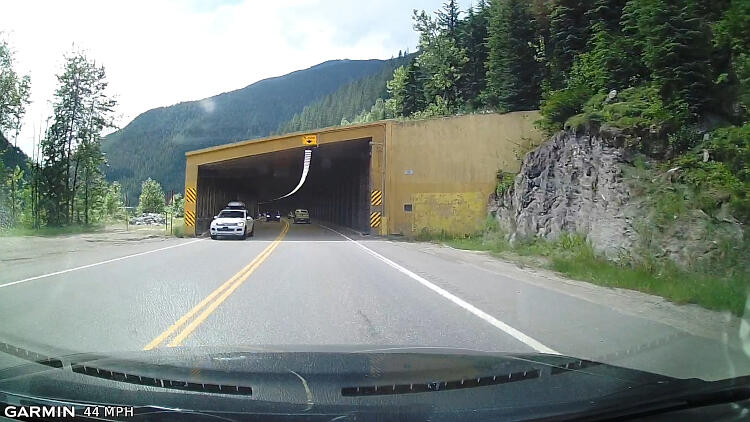 Tunnels and other changing insfrastructure (bridges, tunnes, wooded areas, etc.) along the highway will affect your driving.
Tunnels and other changing insfrastructure (bridges, tunnes, wooded areas, etc.) along the highway will affect your driving.
First and foremost, we're duped by driving we think that driving is easy because we see other people doing it on a daily basis.
The reality: that driving is the most complex task we do almost every day or on a regular basis.
Biological Limitations to Travelling At High Speeds
We're also duped by the fact that because we're traveling at higher speeds in a vehicle that we think that this is easy.
The reality is that we have biological limitations.
We're not cheetahs.
We can't run at 40 or 50 miles an hour.
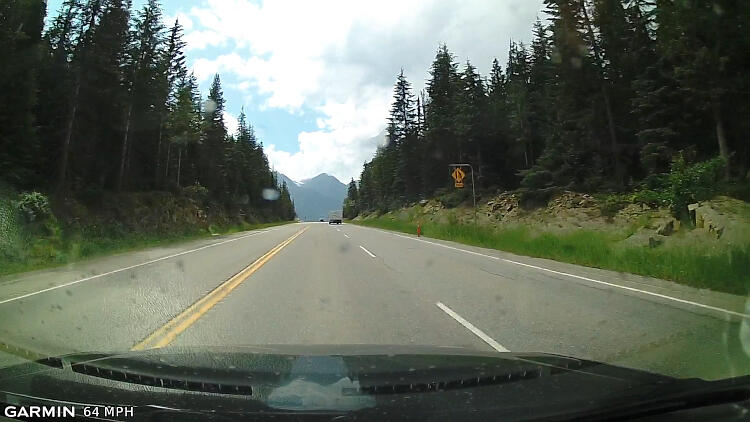 We have biological limits to driving at high speeds. Many new drivers find it intimidating to drive on highways. Road signs will help to predict the changing road conditions.
We have biological limits to driving at high speeds. Many new drivers find it intimidating to drive on highways. Road signs will help to predict the changing road conditions.
We're designed to run at 15 or 20 miles an hour...of course, depending on what kind of shape you're in.
Putting ourselves in a car and driving down the road at 60 or 70 miles per hour we need to implement other skills and strategies and techniques to keep ourselves safe.
By Controlling Space We Have Time to Work
And one of the most important ways that we do that is by controlling space because speed is distance over time.
And if we can control space, if we can control distance around our vehicle: we have time to work; we have time to observe; we have time to process traffic situations; and respond accordingly.
lf you're following too close you're going to be reactionary and when we're reactionary oftentimes we react badly, which some times results in a crash.
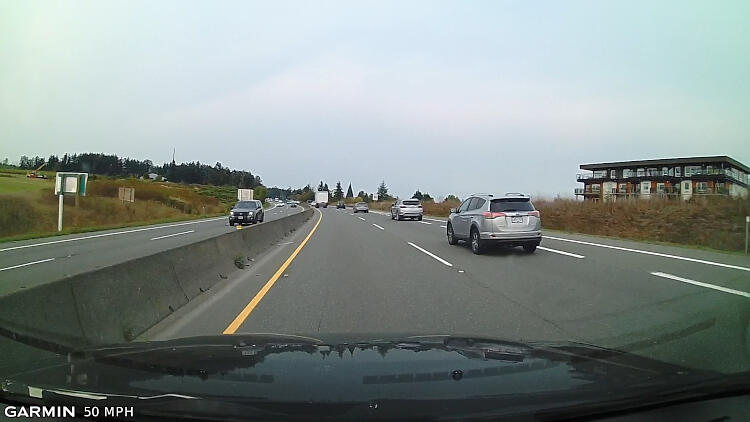 Maintain space in front of your vehicle to give yourself time to work when you're driving. Even though the merge lane is on the right, it may affect vehicles in the left lane.
Maintain space in front of your vehicle to give yourself time to work when you're driving. Even though the merge lane is on the right, it may affect vehicles in the left lane.
So, controlling space gives us time to work the controls of the vehicle; time to process the traffic situation; and make the correct decision.
For example, if you're looking far down the road and you're on the interstate you're going to see that vehicle coming out on to the freeway and merging.
And you're either going to slow down by taking your foot off the throttle and slowing your speed a little bit, or if it's clear you can move over to the next lane allowing the person to merge out onto the highway and freeway.
Maintain distance around your vehicle.
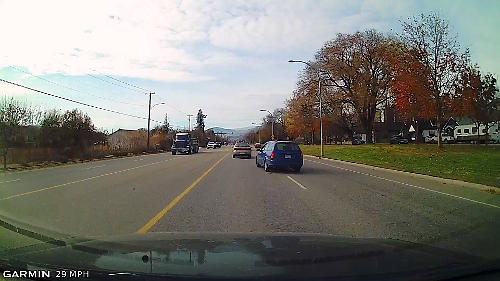 If you maintain space in front, some times others will move into that space. However, they won't be there for very long. Reclaim your space after a vehicle moves into your space in front.
If you maintain space in front, some times others will move into that space. However, they won't be there for very long. Reclaim your space after a vehicle moves into your space in front.
If vehicles are tailgating you simply increase your following distance in front and that way either they're going to go around you or now you can drive your vehicle for yourself and that bonehead behind you that's tailgating you.
Driving Around Semi-Trucks
Big trucks on the highway or interstate - stay away from them.
Give them a good distance because things fall off trucks.
Flat deck trucks and those types of things.
Drivers make errors and leave bars and tools and whatnot on the back of the deck.
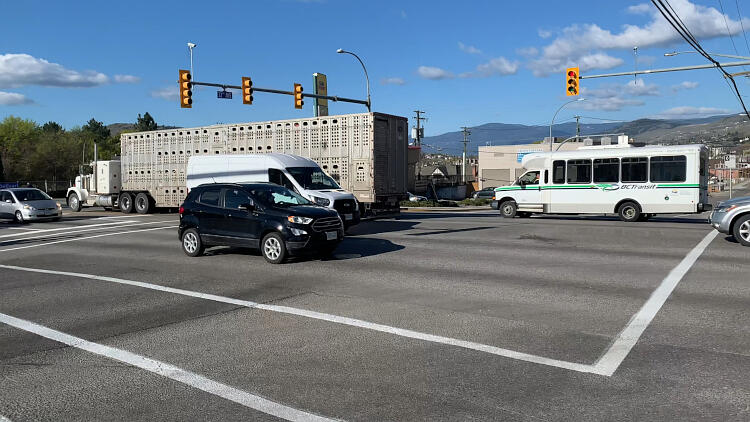 Keep your space from semi-trucks to keep yourself safe. It also allows you to better observe traffic. If safety and observation won't convince you, then know that things fall off semi-trucks all the time. You know, like heavy hard things that will damage your precious car.
Keep your space from semi-trucks to keep yourself safe. It also allows you to better observe traffic. If safety and observation won't convince you, then know that things fall off semi-trucks all the time. You know, like heavy hard things that will damage your precious car.
Logging trucks: things fall off the load and those types of things…small rocks and whatnot.
So, you can prevent chips in your windshield.
But have a good distance between your vehicle and the semi-truck.
And if you're passing, get past them quickly.
So that way it's not limiting your view.
And again, you're protecting your space, you're maintaining that minimum safe distance between you and other traffic on the roadway.
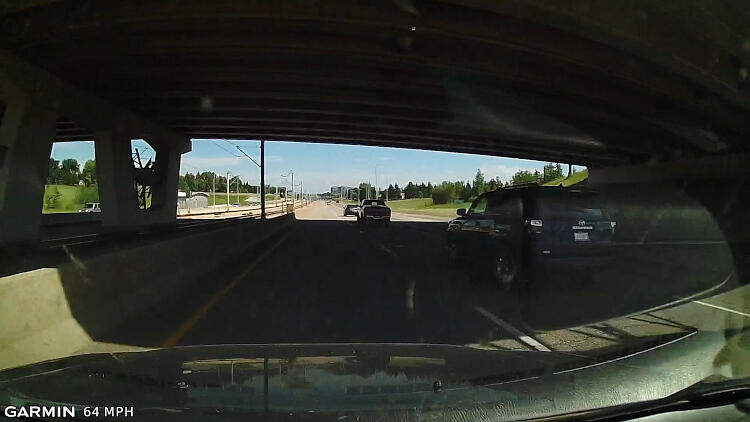 Light changes dramatically along the highway when going under bridges and overpasses. This changing light will affect the speed of traffic.
Light changes dramatically along the highway when going under bridges and overpasses. This changing light will affect the speed of traffic.
The other piece of driving that could create anxiety and fear around driving is changing road infrastructure:
• bridges,
• overpasses,
• mountains,
• curves,
• or anything that is going to change the lighting conditions.
Because we're very sensitive to light.
Most of the information that we require for driving comes through our eyes.
So, if there's a change in the infrastructure, there's a change in the light.
If there's a bridge, or there's an overpass, or there's a large body of water which is reflecting sunlight, all of this is going to cause you to react to the situation.
 Light reflecting off rivers, lakes and oceans can affect your vision and ability to see and observe when driving along highways.
Light reflecting off rivers, lakes and oceans can affect your vision and ability to see and observe when driving along highways.
Look Farther Down the Road to Find the Changes
Again, you want to be looking farther down the road so that you can see these coming and you can respond accordingly.
Because you don't want to slow down when you go under an underpass because the light has changed.
It's gone from bright sunlight to shadow in the underpass.
So, take note of that and know that most of the time you're going to respond to this if you're in the mountains, you're going uphill, or you're going downhill.
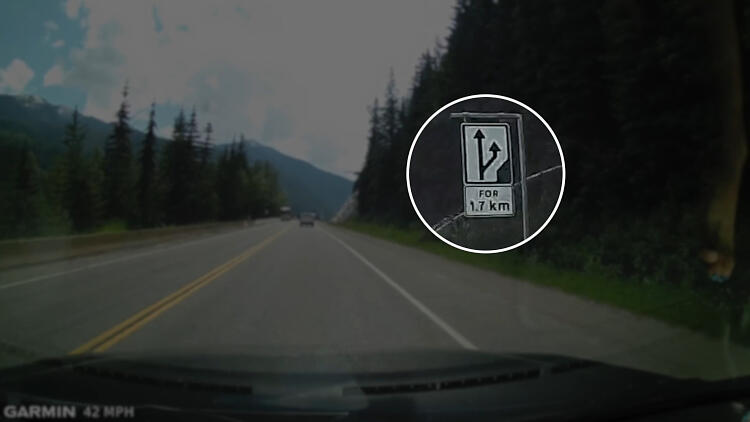 Before passing on a 2-lane road, figure out how far away is the next passing lane. Reading traffic signs will allow you to predict traffic patterns and the actions of individual road users.
Before passing on a 2-lane road, figure out how far away is the next passing lane. Reading traffic signs will allow you to predict traffic patterns and the actions of individual road users.
Again, be looking farther down the road and aiming your vehicle.
Because your vehicle will go where you're looking.
Know that you have anxiety around this changing infrastructure, but maintain a constant speed.
Going Slower Than Traffic Flow Is Dangerous
Keep up with the traffic flow if you can or the posted speed limit.
By going slower than the traffic flow you're being unpredictable and you're going to cause backups.
 Keep the glass clean on your vehicle to help you drive on highways, in cities, and when it's dark. After getting your driver's license, you are safer keeping up with the traffic flow - within reason of course.
Keep the glass clean on your vehicle to help you drive on highways, in cities, and when it's dark. After getting your driver's license, you are safer keeping up with the traffic flow - within reason of course.
Especially on two lane skinny roads, which is opposing lanes of traffic.
Vehicles are going to back up behind you.
And they're going to try and pass you and that makes for another dangerous situation.
So it's better post-license if you can keep up with the traffic flow.
Wait for the Passing Lane
Another point on these two-lane skinnies, if you need to pass or somebody else wants to pass, wait for the passing lane.
So you have a big truck in front of you for example, and you're going slower than you want, wait for the passing lane.
These passing lanes are going to be every 5 or 10 miles.
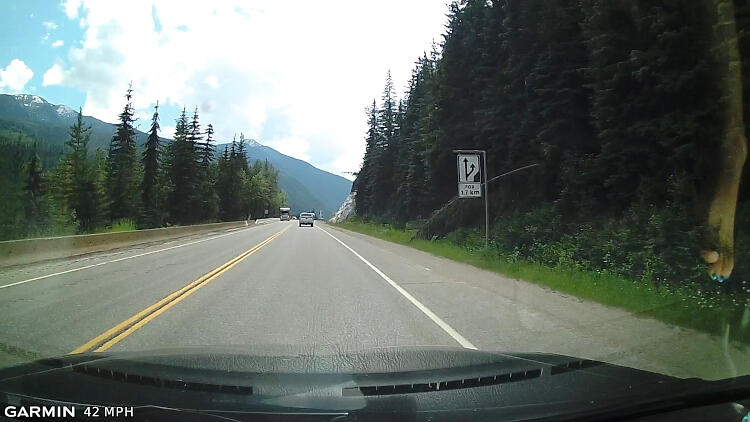 Sign indicating passing lane ahead for drivers that want to keep up with traffic flow. It's always safer to wait for the passing lane when driving on highways.
Sign indicating passing lane ahead for drivers that want to keep up with traffic flow. It's always safer to wait for the passing lane when driving on highways.
And it's safer to wait for the passing lane than it is to get out into that oncoming traffic lane and try and pass, and determine speed and time and whatnot.
And head-on crashes are one of the deadliest, especially at higher speeds.
So if you can wait for a passing lane that's going to be your safe safer option.
Learn to Use Cruise Control
Another way to reduce fear and anxiety around driving on highways and in changing traffic conditions is to use cruise control.
When you're out on the highways this is going to eliminate one of the distractions.
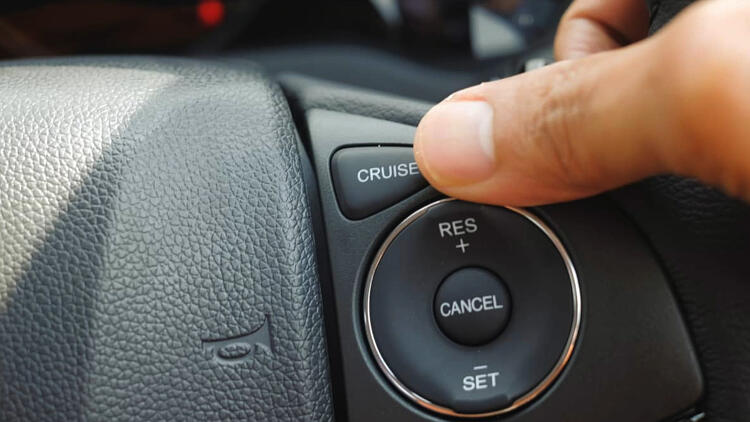 Learn how to use cruise control to reduce the number of distractions you have when driving on the highway.
Learn how to use cruise control to reduce the number of distractions you have when driving on the highway.
The distraction is controlling your speed.
With cruise control you can now control your speed.
And that's one less thing that you have to monitor when you're driving.
And that will allow you to look farther down the road.
Look for those changing traffic conditions, bridges, overpasses, hills, construction, the concrete barriers, and those types of things.
So, learn how to use cruise control.
Now for many people they feel like they don't have control of their vehicle when they're on cruise because.
They haven't figured out how to hit the cancel button very quickly.
 Bridges and other highway infrastructure are going to affect traffic. This changing infrastructure may cause drivers to slow their speed...even for a moment.So you want to practice a little bit and you want to get on some roads that aren't busy with low-density traffic.
Bridges and other highway infrastructure are going to affect traffic. This changing infrastructure may cause drivers to slow their speed...even for a moment.So you want to practice a little bit and you want to get on some roads that aren't busy with low-density traffic.
And you want to practice canceling the cruise control.
Newer vehicles are going to have a cancel button.
Some of the older vehicles - mine for example, has a five-speed manual transmission.
If I just touch the clutch it automatically disengages the cruise control.
You can also hit the brake but that's not your best response because you don't want to touch the brake and turn the brake lights on because it's going to cause a ripple effect behind you.
Construction will cause traffic to slow, or be delayed. Look for flaggers and reduced speeds in construction zones.You want to use the cancel button or touch the clutch to cancel the cruise control on your vehicle.
But get familiar with that.
And like I said, it will reduce one of the things that you have to do which is monitor your speed.
And now you can maintain constant speed, and you can be looking farther down the road for those changing road conditions that are causing you anxiety:
• overpasses,
• bridges,
• large bodies of water with changing light conditions,
• and all the other things that are causing you to have grief and anxiety
…and kind of you know, you’re white knuckling the steering wheel.
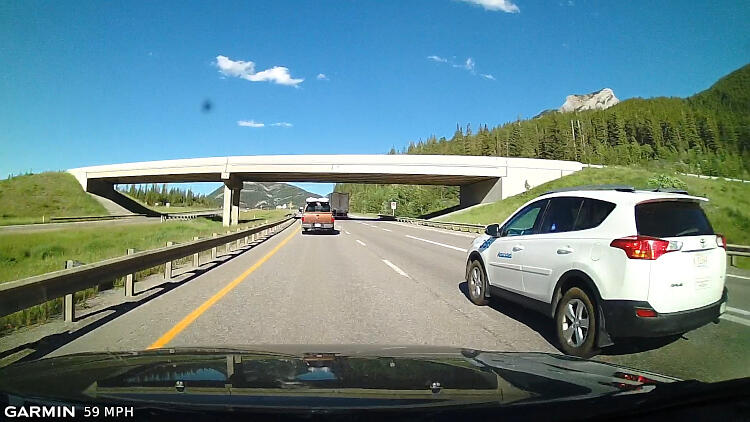 Take a break every hour when driving to get out and stretch your legs - 2 hours if you're more comfortable.
Take a break every hour when driving to get out and stretch your legs - 2 hours if you're more comfortable.
Take a Break Every Hour
Last point.
Take a break every hour.
Get out walk around the vehicle.
Repeat your mantra to yourself: “I'm a good driver.” “I'm driving well.” I'm safe.”
 Wear comfortable clothing when you're driving and take a break every couple of hours. If you have anxiety or fear around driving, take a break every hour .
Wear comfortable clothing when you're driving and take a break every couple of hours. If you have anxiety or fear around driving, take a break every hour .
Repeat that mantra and that will help you to relax.
Focus on your breathing: breathe in through your nose into your navel, and hold for three seconds.
[DEMONSTRATING BREATHING EXERCISE]
Breathe out through your mouth repeating your mantra.
“I am a safe driver.” “I am a good driver.” “I am doing well.”
Get back in the vehicle and drive.
So have those breaks, have those mantras, and practice that breathing.
The breathing will cause your body to relax.
 Are you returning to driving after the pandemic? Please leave a comment.
Are you returning to driving after the pandemic? Please leave a comment.
Question for my smart drivers:
Have you experienced post pandemic anxiety while driving on highways or in other places that cause you a little bit of fear when you're driving?
Leave a comment down in the comment section there.
For more information smartdrivetest.com.
And remember, pick the best answer not necessarily the right answer.
Have a great day.
Bye now.

